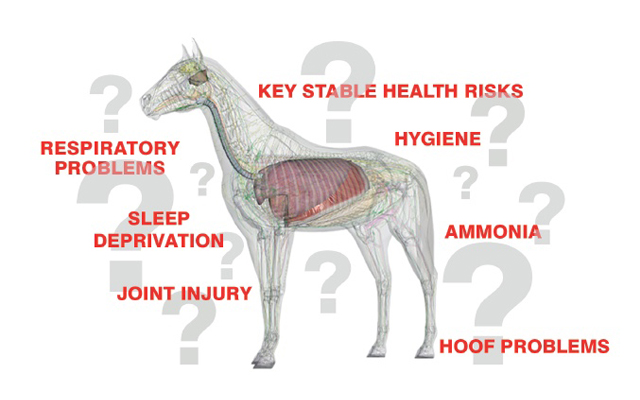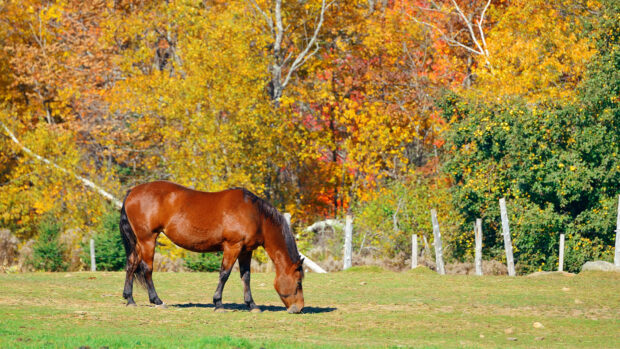Promotional Feature
Beating respiratory disease with dust-free bedding
In a national BEDMAX equine health survey carried out in March this year, we found that respiratory disease was by far the most common equine health issue experienced by more than 1,000 owners who responded to the survey.
Of the 420 owners who reported that their horses had suffered a health problem serious enough to require the vet and/or box rest, more than 30% reported respiratory disease as the culprit. Equine vets confirm that this corresponds to their experience. In fact, among horses aged eight years old or more, it is estimated that up to 50% will have respiratory problems.
By far the most common cause of respiratory disease is airborne dust in the stable. And in this era when most owners feed haylage or soaked or steamed hay, by far the most common source of this dust is bedding.

The respiratory problems that airborne dust and spores from bedding can cause range from simple irritation and inflammation of the airways, causing minor discharges and possibly coughing, up to chronic recurrent airway obstruction (RAO). Formerly known as COPD and still sometimes called the heaves, RAO is an incurable condition that causes extreme suffering for horses, great distress and cost for owners, and can put a horse permanently out of action.
But in many cases it can be prevented – or at least mitigated – simply by using a genuinely dust-free bedding in the horse’s stable (alongside dust-free forage). Certainly the first ‘treatment’ that an equine vet will prescribe for a horse with respiratory problems of any kind will be to clean the stable thoroughly, and then put down a dust-free bed.
It is vital that the bedding is really free of the tiny, airborne particles of dust that float in the horse’s breathing zone and can be inhaled deep into the respiratory system. The smaller the particles, the deeper they can penetrate into the lungs, and the more serious the damage they can do.
Unfortunately, there is as yet no measurement of dust levels that manufacturers must test and certify on their bedding. Many beddings are branded as ‘dust extracted’, but many ‘dust extracted’ beddings still contain far too much inhalable dust for optimum health.

In our research during the development of BEDMAX and LITTLEMAX shavings, we consulted one of the world’s leading experts on equine respiratory disease at the Royal School of Veterinary Studies in Edinburgh. Their own research had determined that dust particles could be as small as 4 microns before they could become airborne and small enough to slip past the respiratory system’s own natural defences in the nasal passages and windpipe. So at BEDMAX we screen out and vacuum-extract any ‘dust’ over 10 microns in size, just to be on the safe side. You can find out more here at www.bedmaxshavings.com/equinehealth
We owe it to our horses to kick disease out of the stable. The key word here is ‘PREVENTION’. Using a dust-free bedding in your stable, and managing your bedding properly, is the best form of preventative healthcare – a simple way to avoid the suffering, distress and cost of this major threat to your horses’ health and wellbeing.




